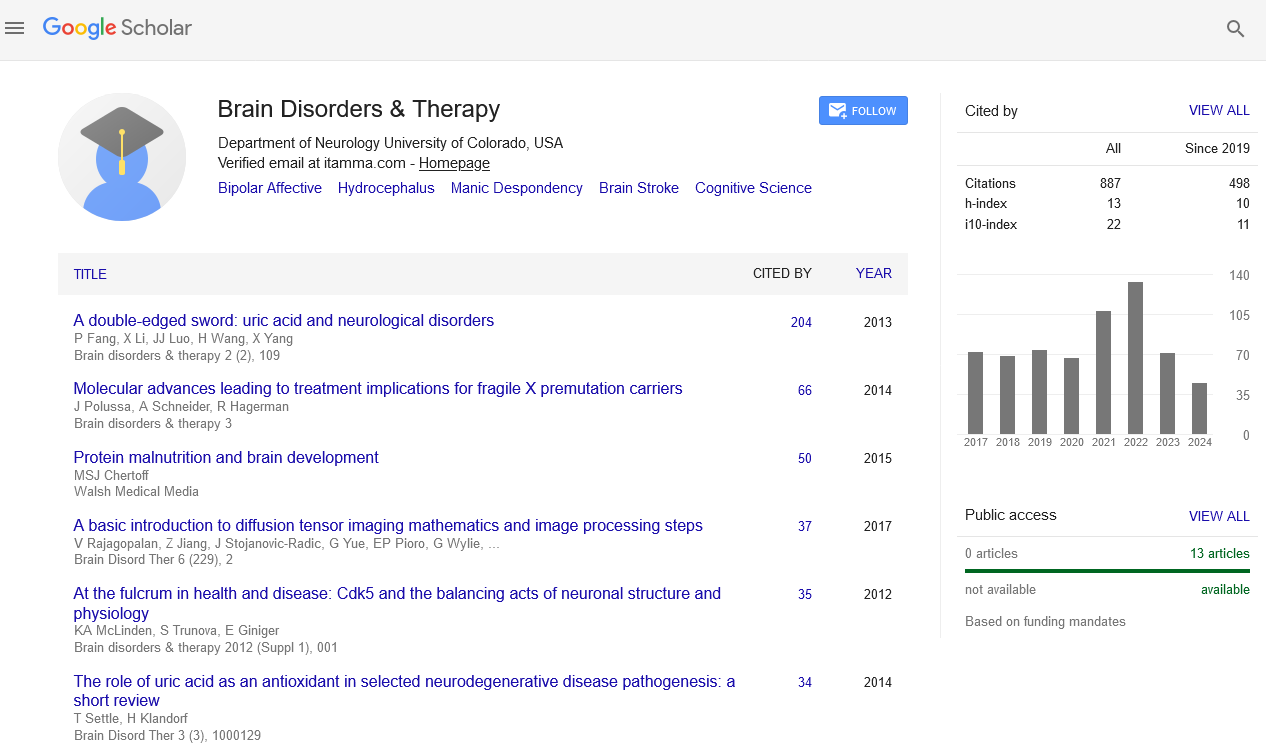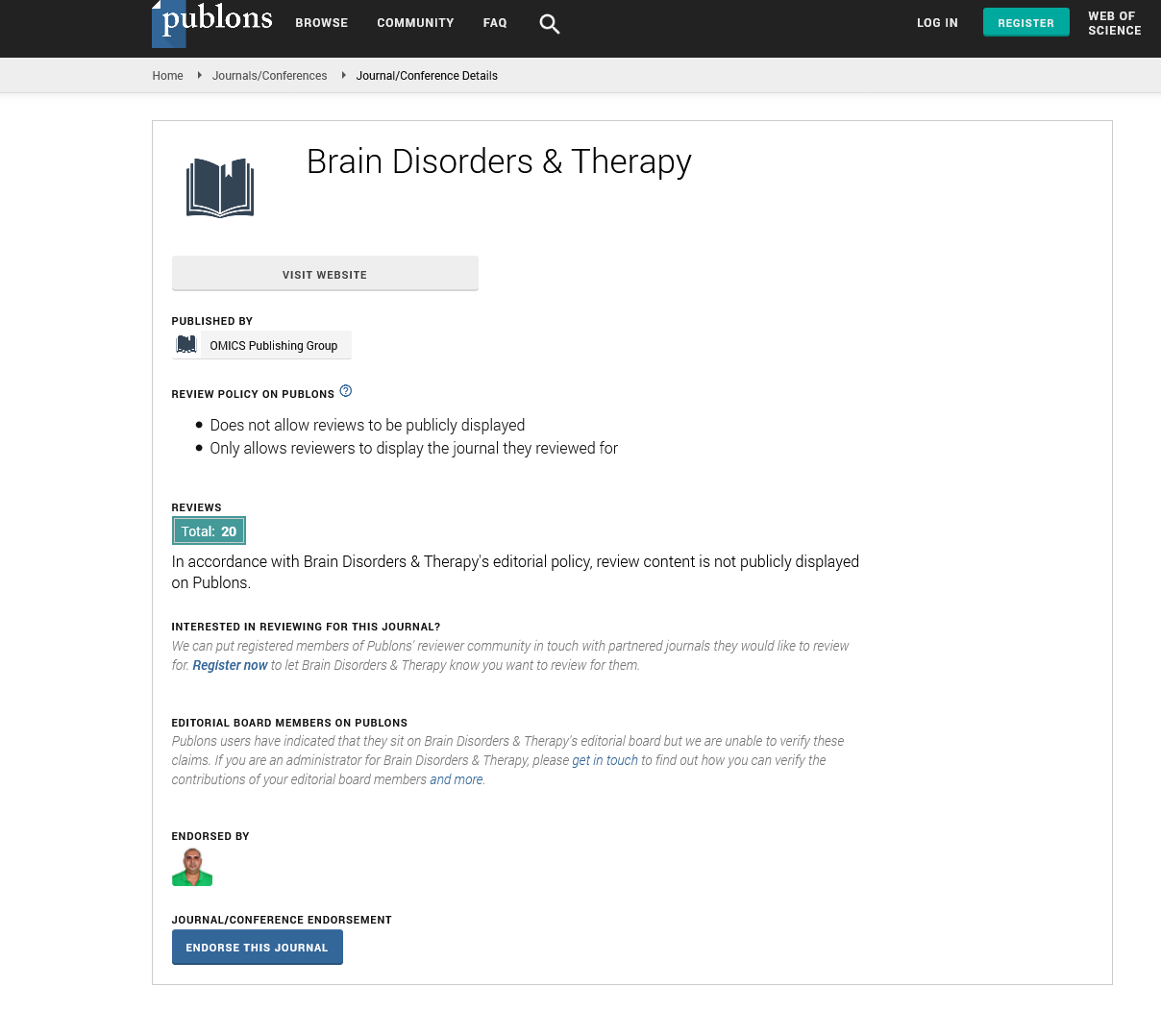Indexed In
- Open J Gate
- Genamics JournalSeek
- JournalTOCs
- RefSeek
- Hamdard University
- EBSCO A-Z
- OCLC- WorldCat
- Publons
- Geneva Foundation for Medical Education and Research
Useful Links
Share This Page
Journal Flyer

Open Access Journals
- Agri and Aquaculture
- Biochemistry
- Bioinformatics & Systems Biology
- Business & Management
- Chemistry
- Clinical Sciences
- Engineering
- Food & Nutrition
- General Science
- Genetics & Molecular Biology
- Immunology & Microbiology
- Medical Sciences
- Neuroscience & Psychology
- Nursing & Health Care
- Pharmaceutical Sciences
Is acute reperfusion therapy safe in acute ischemic stroke patients who harbor unruptured intracranial aneurysm
Global Summit on Stroke
August 03-05, 2015 Birmingham, UK
Ashkan Mowla
Posters-Accepted Abstracts: Brain Disord Ther
Abstract:
Background: Intracranial aneurysms (ICAs) are currently considered as contraindication for intravenous (IV) thrombolysis
in acute ischemic stroke (AIS), very likely due to a hypothetical increase in the risk of bleeding from aneurysm rupture;
however, there is limited data available on whether IV thrombolysis is unsafe for AIS patients with pre-existing ICAs.
Aim: To find out the safety of IV thrombolysis in AIS patients who harbor ICAs.
Methods: We retrospectively reviewed the medical records and cerebrovascular images of all the patients treated with IV
thrombolysis for AIS in our center from the beginning of 2006 till the end of April 2014. Those with unruptured ICA present
on cerebrovascular images prior to acute reperfusion therapy were identified. Post thrombolysis brain imaging were reviewed
to evaluate for any intraparenchymal or subarachnoid hemorrhage related or unrelated to the aneurysm.
Results: A total of 637 patients received IV thrombolysis for AIS in our center during 8.3 years period. Thirty three (5.1%)
were found to have at least one ICA, twenty three (70%) of those received only IV thrombolysis and 10 patients has received
combination of IV and intra-arterial (IA) thrombolysis. The size of the largest aneurysm was 10 mm in maximum diameter
(Range: 2 mm to 10 mm). No symptomatic intracranial hemorrhage (sICH) occurred among the 23 patients receiving only IV
thrombolysis. Out of those who received a combination of IV and IA thrombolysis, 1 developed sICH in the location of acute
infarct, distant to the aneurysm location.
Conclusion: Our findings suggest that neither IV thrombolysis nor combination of IV and IA thrombolysis increase the risk
of aneurysmal hemorrhage in AIS patients who harbor ICAs less than 10 mm in diameter. Their listing in exclusion criteria
for IV thrombolysis should be reconsidered to assure appropriate use of acute reperfusion therapy in this group of patients.


